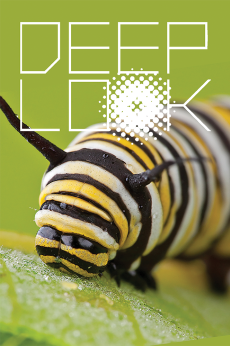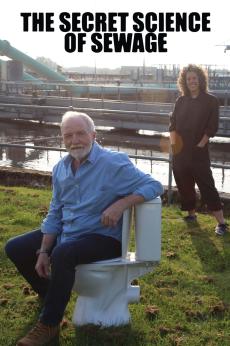Antarctica’s Penguins Taught Us Surprising Life Lessons
To find Adélie penguins, Caitlin and Arlo set out on a quest to Cape Royds, home to the southernmost Adélie penguin colony in the world. There, they learn about why people love these black and white birds and how Antarctica’s penguin populations are indicators of climate change. But non-ideal conditions and gusting winds put a damper on their plans.
Episodes
-

Antarctica’s Penguins Taught Us Surprising Life Lessons
S1 E10 - 14m 4s
To find Adélie penguins, Caitlin and Arlo set out on a quest to Cape Royds, home to the southernmost Adélie penguin colony in the world. There, they learn about why people love these black and white birds and how Antarctica’s penguin populations are indicators of climate change. But non-ideal conditions and gusting winds put a damper on their plans.
-

Exploring Antarctica's Active Volcano Mt. Erebus
S1 E9 - 7m 28s
Mount Erebus is one of Antarctica’s two active volcanoes and the southernmost active volcano on Earth. Conveniently, Erebus’ summit is a mere 25 miles from McMurdo Station. After a helicopter trip to its flank, at altitude in -30° F conditions Caitlin & Arlo embark on foot and see firsthand how breathtaking (literally) Erebus is — and why an active volcano in a land of ice is a scientific wonder.
-

What Do You Eat in Antarctica?
S1 E8 - 12m 50s
In Antarctica, it’s so cold that the average person needs to consume between 3,200 and 5,000 calories a day. And because the continent is frozen, no food grows there naturally. So how does the population of scientists and support personnel, hundreds of whom every year visit Antarctica’s largest research base, McMurdo Station, stay fed?
-

Why Don’t Fish Freeze in Antarctica?
S1 E7 - 12m 1s
Arlo and Caitlin learn that the Antarctic marine realm is not only spectacular to see, but fascinating for scientists to study. The water is so cold that fish inhabiting it should freeze like an icicle. So how do Antarctica’s fish, which penguins and seals rely on for food, survive in waters below their freezing point?
-

Where Does the Poop in Antarctica Go?
S1 E6 - 13m 14s
Antarctica is home to a handful of research stations. These stations are occupied by scientists and other staffers, all of whom generate a whole lot of waste. Under the Antarctic Treaty System, an international agreement to protect the continent, waste of any kind—garbage, human poop, you name it—can’t be left on the continent. So what happens to it?
-

Exploring Antarctica's Threatened Glaciers (with a Robot)
S1 E5 - 10m 39s
Researchers hope they can better understand how climate change is affecting Antarctica’s vulnerable glaciers. Caitlin and Arlo meet with scientists & engineers at the 8-mile-long Erebus Glacier Tongue to discover how a 12-foot-long robot named Icefin might help save the world. Then, they head to the Florida-sized Thwaites glacier on the West Antarctic Ice Sheet - the front line of climate change.
-

What is it Like to Live in Antarctica?
S1 E4 - 9m 41s
People have been visiting Antarctica for over a century. Today, living in Antarctica is a bit different. Eclectic bands of scientists and support personnel are drawn to the continent and, every year, a crew makes their home on “the ice.” Will hosts Caitlin Saks and Arlo Pérez be able to discover what it is about this icy, seemingly inhospitable place that makes it so alluring?
-

Why is this Antarctic Glacier “Bleeding?”
S1 E3 - 10m 1s
Five stories high and emerging from the Taylor Glacier in the Dry Valleys of Antarctica, Blood Falls seeps into an ice-covered body of water called Lake Bonney. It’s one of the continent’s most enigmatic natural features and has fascinated scientists for decades. What makes it red? Does it always flow? And can anything actually survive near it?
-

How Antarctica’s Cutest Baby Seals Grow Up
S1 E2 - 10m 50s
Giving birth and raising young is particularly challenging in Antarctica’s extreme conditions, forcing Weddell moms and pups to bear sub-zero temperatures and prevailing winds. How do they manage to do it so gracefully? To find out, Caitlin and Arlo travel to a seal colony during pupping season. Footage of seals was obtained under the authority of NMFS MMPA permit nos.1032-1917, 17236, & 21158
-

Antarctica: Journey to the Bottom of the Earth
S1 E1 - 14m 10s
In the premiere episode of Antarctic Extremes, join hosts Caitlin Saks and Arlo Pérez as they follow in the footsteps of the brave scientists that have made McMurdo Station their research base and second home. 5 days, 12,000 miles, and 7 time zones with hundreds of pounds of camera gear in tow, Caitlin and Arlo temporarily leave their day jobs and go on a journey to the bottom of the world.
WETA Passport
Stream tens of thousands of hours of your PBS and local favorites with WETA Passport whenever and wherever you want. Catch up on a single episode or binge-watch full seasons before they air on TV.
Similar Shows

Your Health: A Sacred Matter
Science and Nature

First Contact: An Alien Encounter
Science and Nature

Deep Look
Science and Nature

Vitals
Science and Nature

Fascinating Fails
Science and Nature

The Secret Science of Sewage
Science and Nature

Big Cats 24/7
Science and Nature

Hot Mess
Science and Nature

Return to the Wild
Science and Nature

Chesapeake Bay by Air
Science and Nature